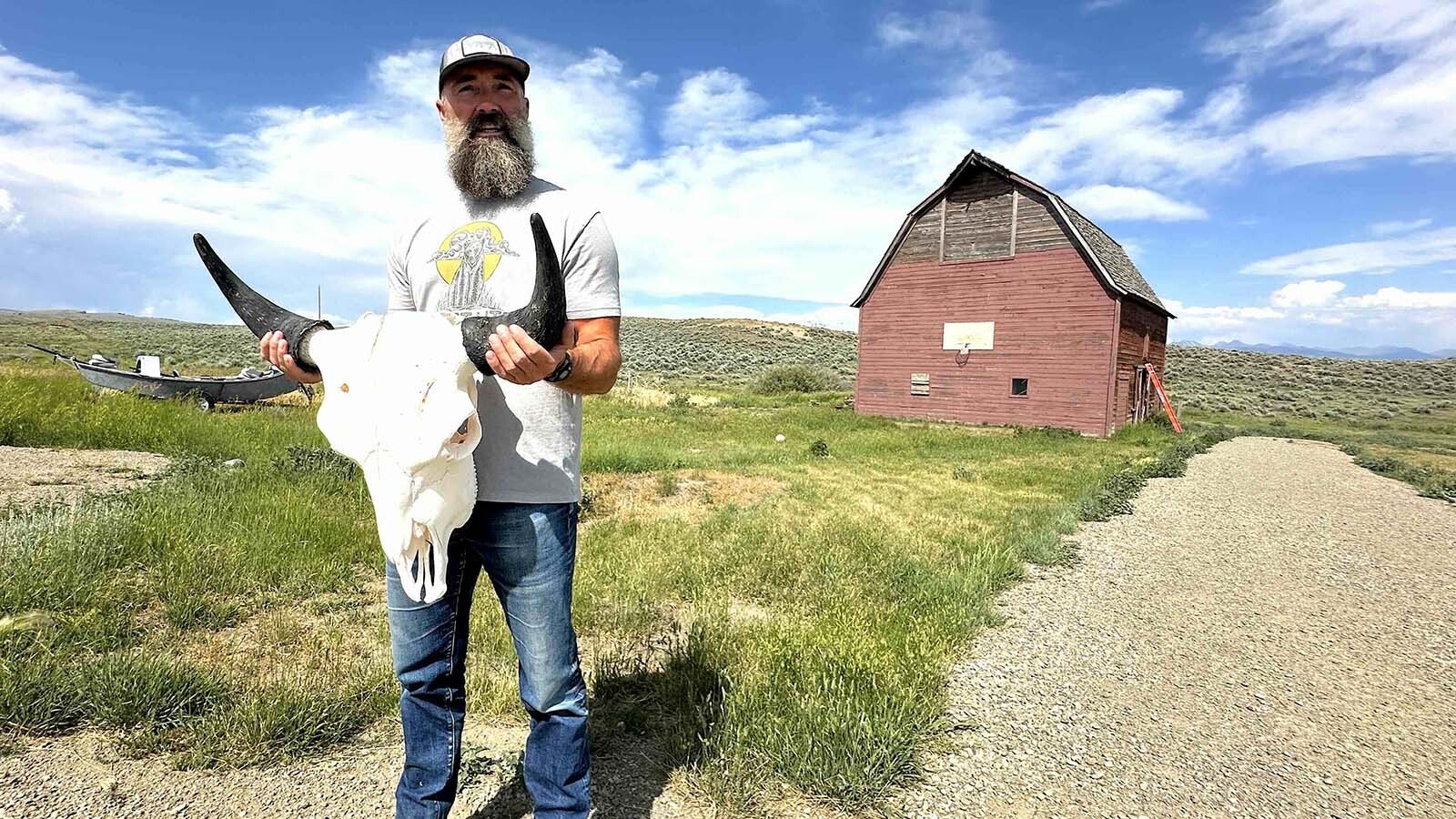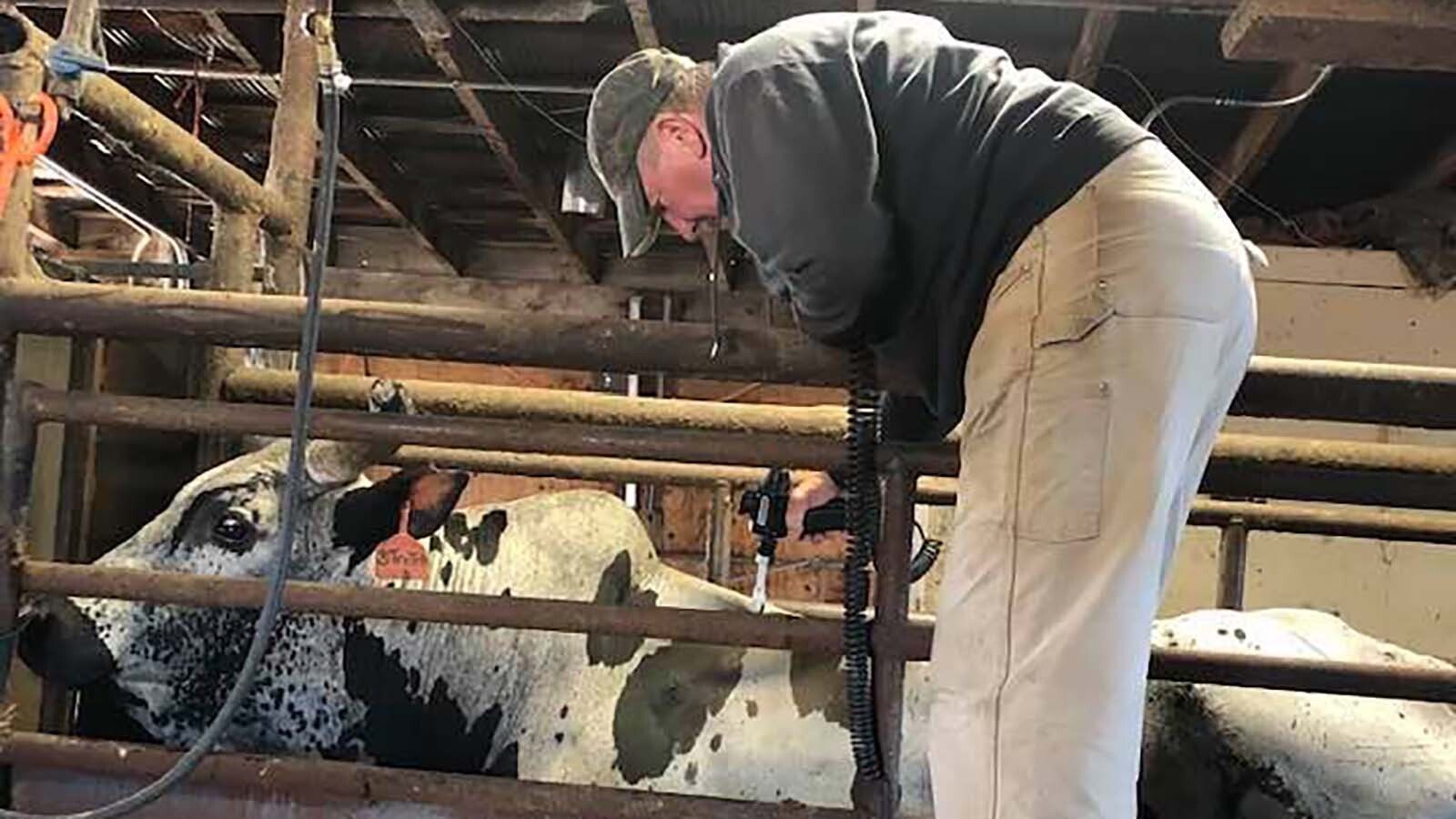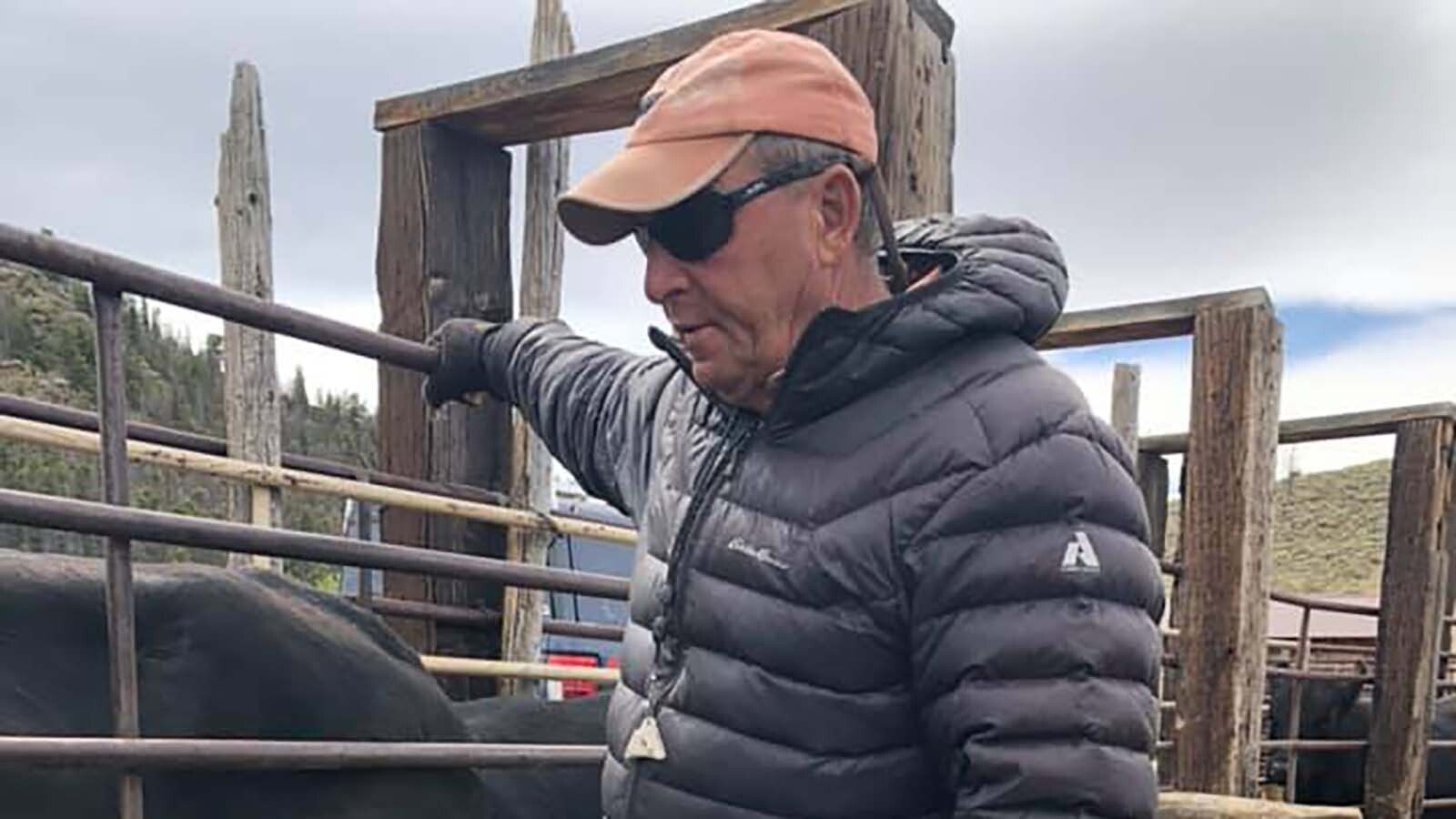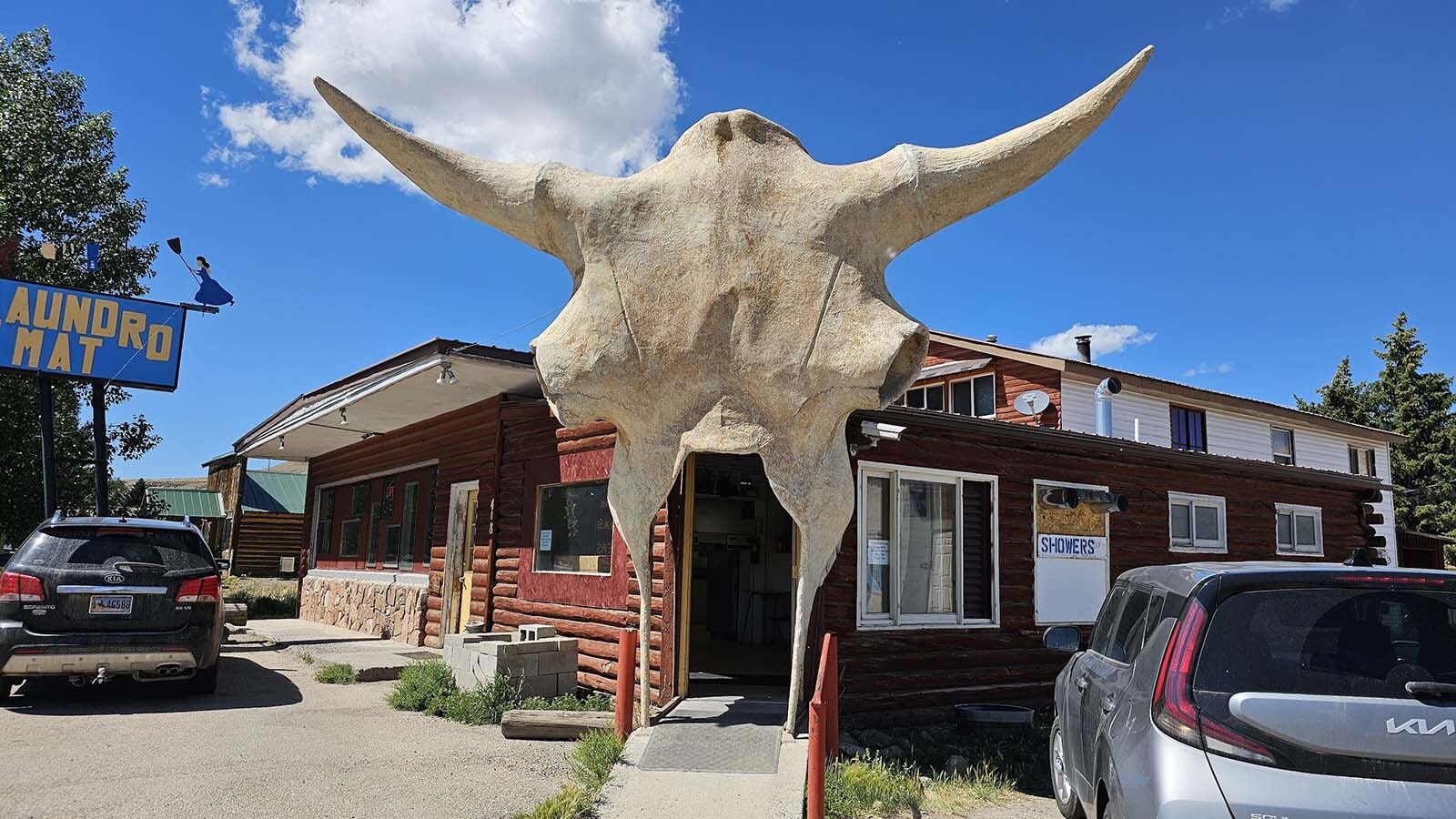When Phil Roberts was a child, he remembers driving to Lusk from his family’s ranch in the Hat Creek country.
In the summertime, his folks would sometimes stop on the way to town at the ruts that marked the route of the old Cheyenne-Deadwood Stage Line and have a picnic.
“I remember my legs were so short that they wouldn’t reach down to the bottom of the ruts,” Roberts told Cowboy State Daily. “And that’s what started getting me fascinated with Western history.”
Since that first spark of interest, Roberts has spent a lifetime researching and relaying the stories of his home state as a teacher, author and a speaker. His collaborative work, “Wyoming Almanac,” was printed and revised seven times before it became too big to contain the printed page.
That knowledge has been moved online to his website, wyomingalmanac.com, which is where Roberts continues to post tidbits of Wyoming’s rich history.
Wyoming Native
Although born in Lusk, Roberts and his family did not stay there.
From there, they moved to Torrington, then later to Thermopolis, Worland and Cody, where he graduated from high school in 1966. From there, he attended college at Northwest in Powell before getting drafted into the Marine Corps.
When he returned from duty, he chose to finish out his undergraduate career at the University of Wyoming, where he earned a law degree in 1977.
“I was self-employed at my own law firm,” said Roberts. “I practiced in Medicine Bow, in Laramie and in Cheyenne, mostly natural resources (law).”
From Lawyer To History Professor
As much as the law career interested him, the cases that really captured Roberts’ attention were the ones that required historical research.
“I was doing some research for a legal case once in the State Archives and Katherine Halverson, who was the director of the State Archives, noticed my interest and she said, ‘Have you ever thought about switching careers to history?’” Roberts recalled. “And I laughed and I said, ‘I don’t think I’d ever do that.’ And she said, ‘Well, think about it. We have a job opening here and you might find it interesting.’”
Roberts did find it interesting – so much so that he took the job and worked the next five years as a research historian at the Wyoming State Archives.
That job, and a move to Washington state, set him on the path to earn a Ph.D. in history at the University of Washington in Seattle in 1990.
“It was a very fortuitous time to have gotten (my Ph.D.), because there was one position in the entire state of Wyoming at the university level that actually opened up, and that was teaching Wyoming history at UW here in Laramie,” said Roberts. “And I applied to the job and got it, and then retired 30 years later.”
Roberts said that in his 30 years, about 25,000 students attended the classes he taught.
“I had grad students who went on to long careers in Academe or government service,” he said, “and a lot of them eventually went to law school, too.”
Explored Every Corner
To get an idea of just how well Roberts knows Wyoming, he ran for governor in 1998. While he didn’t win his primary, during the campaign he commented that he would travel “everywhere from Cody to Carpenter, Cokeville to Colony.”
But a friend gave him some sage advice.
“The late Jim Griffith, who was the state treasurer and an old family friend from Niobrara County, called me up right afterward and said, ‘I wouldn’t do that if I were you,’” Roberts recalled. “And I said, ‘Why not?’ And he said, ‘Well, have you ever been to Colony?’ And I said no. And he said, ‘Well, you have to go into South Dakota to get to Colony – you can’t even get there from Wyoming.’”
But Roberts decided that he would show up in Colony anyway to see any potential voters there.
“I met workers coming out of the plant, and I looked with amazement at the fact that they all got into cars with South Dakota license plates,” Roberts said. “So I figured, well that was a waste.”
But traveling around the state didn’t end with his campaign. Roberts was a sought-after speaker for civic clubs, history organizations and school groups, which opened opportunities to travel to every corner of Wyoming.
“Rarely a year went by that I wouldn’t have at least 50 appointments or 50 programs that I presented around the state on every aspect of Wyoming history,” he said, stressing that he never accepted a speaking fee, as he considered sharing Wyoming’s history with others as a service to the state. “It got me acquainted with every corner of the state, and I would become a better historian by looking at places where I traveled.”
Wyoming Almanac
Roberts’ legacy, however, lies in the 700-page tome that started as an idea over a family dinner in the early 1980s.
“My brother Steve and I used to quiz each other on trivia about Wyoming,” he said. “We would sit for hours trying to fool each other, trying to one-up each other on what we knew about Wyoming.”
While at dinner with his parents one day, Steve and Phil’s brother David challenged the two to do something with all of that knowledge.
“He said, ‘Why don’t you guys put together a book or something?’” Roberts said. “And so we incorporated him into the project and came up with the Wyoming Almanac about 1985.”
Roberts said the project was a collaboration of all three brothers and was first printed in 1989. In its hard copy form, it was reprinted and revised in seven editions over the next 25 years.
“It got so thick, it was something like 700 and some pages, and the printer alerted us that they could no longer accommodate it in one volume,” said Roberts. “The type was getting small and brother David said, ‘Well, if we make the type any smaller, we’ll have to include a magnifying glass with every copy of the book.’”
Now the website, wyomingalmanac.com, allows Roberts even more space to collect the stories of Wyoming.
Still Keeping Records
In 2020, Roberts suffered some health issues that impacted his ability to update the website as frequently.
“I’m still working on the website, but a lot slower,” Roberts said. “It doesn’t get updated as much as it did when I was healthy, but I still still find time to work on it.”
But he’s working on the almanac by himself more these days as he lost his collaborator, his brother Steve, who died suddenly last May.
But the stories still need to be told, Roberts believes, which is why he keeps the website updated. A page that he says is chock-full of interesting stories is the one labeled “Buffalo Bones.”
“That was a column that I started when I worked for the State Archives,” Roberts said. “It was an anecdote every two weeks that we’d print and send out to newspapers around the state, and it would be syndicated in some 35 newspapers around Wyoming.”
Roberts said there are dozens of interesting stories under the Buffalo Bones tab, like the story about Wild Bill Hickock’s marriage in Cheyenne, or Duncan Hines’s favorite meal.
“It’s stuff that really probably isn’t very important, but I think it’s interesting to readers,” he said.
Walk the Walk
Roberts recommends that any good student of Wyoming history put in the miles to really know the subject.
“Researching it in the archives and the libraries, you really get a strong perspective of what’s going on,” he said. “But you know it so much more thoroughly if you’re on the ground and are meeting the people and seeing the places that are talked about in the record.
“Walk the walk and see what people do.”





